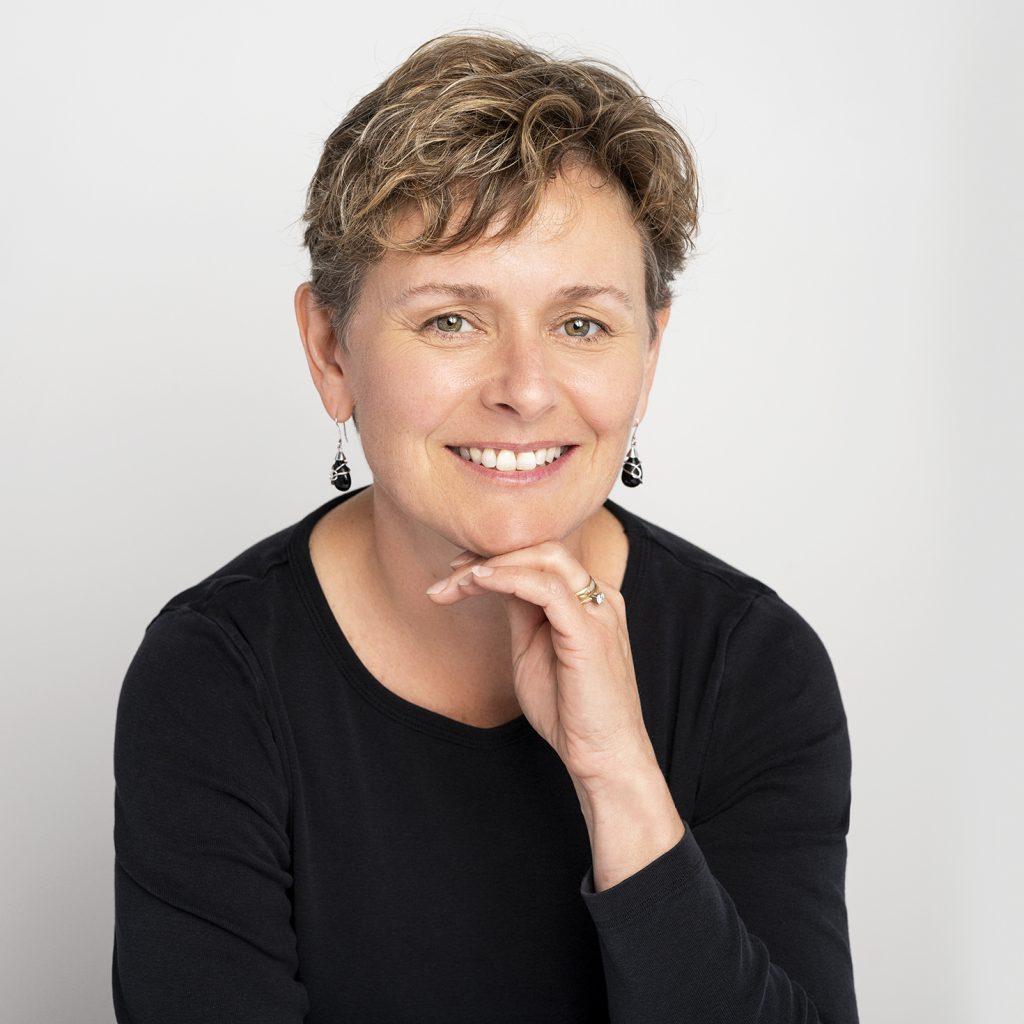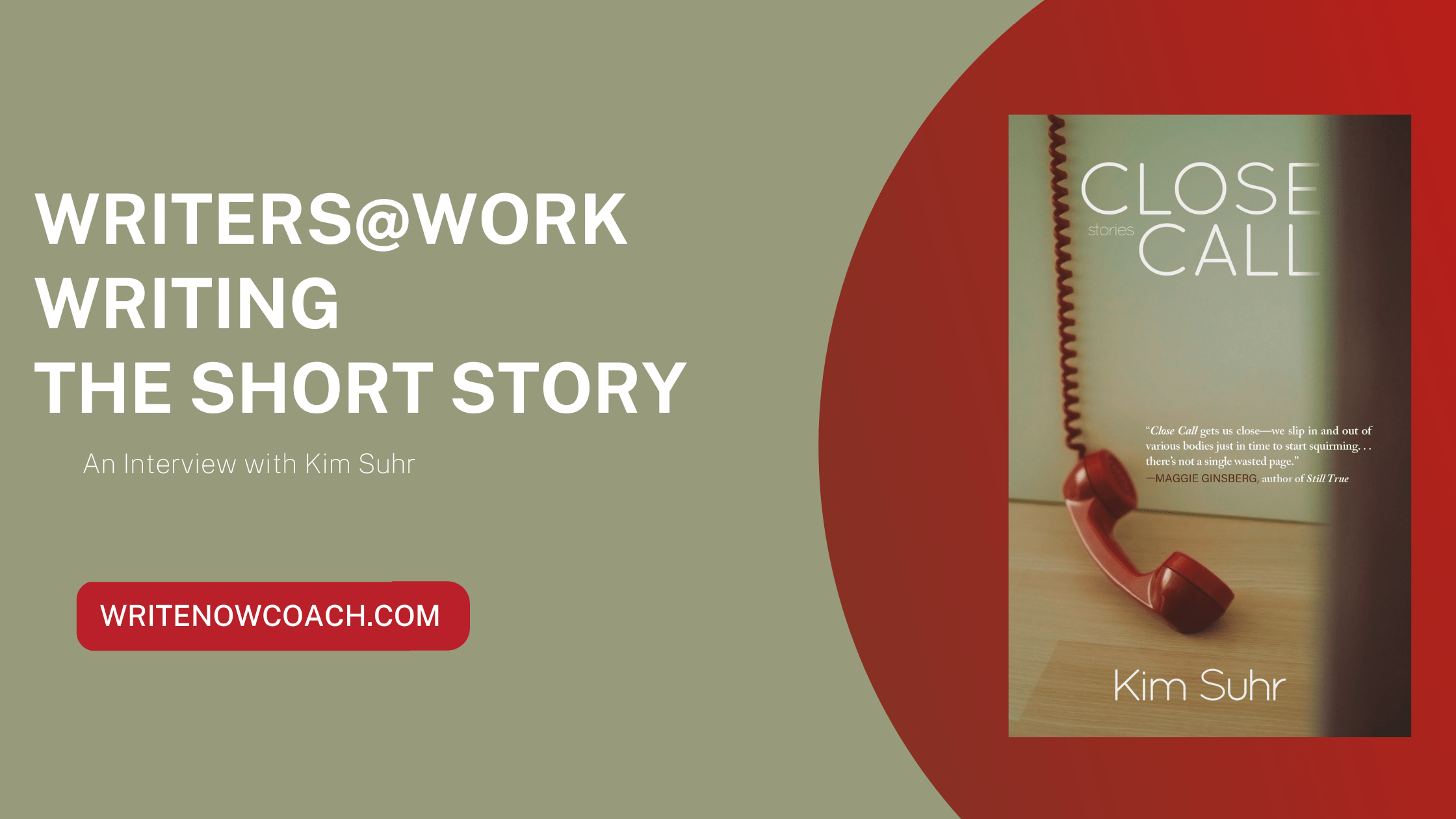Writers@Work: Writing the Short Story
An Interview with Kim Suhr
by Rochelle Melander
Tell us about your new book, Close Call: Stories
Close Call is a collection of shorts that center around the near misses of life—some more literal than others. The pieces in the opening and closing sections fit more clearly in the short story form with the middle section told through a series of texts, social media posts, short play scripts, and other brief forms. What they all share is what I think of as “the moment,” the moment of possible transformation, the maybe-redemption of a character’s journey. There are no guarantees of happily-ever-after, but, I hope, the reader will find empathy or at least a new way of seeing people who are different from them. People have told me it has a “Midwestern sensibility,” whatever that is.
You played with forms in the stories, even using a play excerpt. Can you talk about that—what forms you used. I’m curious, how did using different forms help free you as a writer and support you in telling the stories?
As a reader, one of the things I enjoy most about short stories is that the writer doesn’t spell out everything on the page that would be expected in longer-form fiction. One well-chosen setting detail in a short story can do the “work” of a whole paragraph in a novel; one carefully-crafted line of dialogue or piece of body language can speak volumes. The writer trusts the reader to become a “co-creator” of the story by filling in “blanks.” Playing with form takes this type of writing (and reading) to a new level.
When a story is told through a series of text exchanges or posts to a prayer chain website or even a play script, much of the imagining of what happens off the page or in the heads of the characters is left to the reader. Not all readers enjoy doing that much of the “work” of reading, but for those who do, this sort of mixed-form writing can scratch a creative itch.
It takes a lot of work to polish a story so it’s ready for publication. What kinds of tips do you have for readers who want to learn how to self-edit?
In revising early drafts, time away from a draft can be a writer’s best friend. I once took a workshop from the writer, Valerie Miner, who described the early draft of a story as “the writer reading the story as they’re writing it,” which is exactly how it feels. We are trying to get a handle on the “what happens next?” (note: this often takes more than one draft!). What takes the piece to the next level, though, is the “why?” and the “what’s missing?” The distance of time helps us see the work objectively and fill in the things that our brain has automatically been filling in for us in the earlier drafts. When we have been away from the piece for a while, we are able to see it afresh.
Reading your work aloud is also a great tool for editing. Reading it aloud to someone else is even better. Something about “hearing” it through an audience’s ears makes a difference—whether or not the person is going to provide a critique or listen.
Finally, I have to put in a plug for finding a few trusted readers or a reading group—people who aren’t there to stroke your ego or to tear it down. They will help you see past your blind spots and keep you honest.
You are a busy entrepreneur as well as a writer. What are some of your productivity tips?
I was hoping I could ask YOU that question, Rochelle. I feel like such a poser in this area! Most days I feel like I’m barely keeping my nostrils above the surface of the water. If anything gets done in my professional life, it’s because of two simple tools: lists and a calendar. (Which is kind of funny because in one of my stories a calendar proves to be the main character’s undoing!) I am so energized by crossing items off a list as they’re completed that it’s not unusual for me to add something to the list after it is done for the sheer pleasure of crossing it off! A calendar makes me honor my commitments—including my “appointments” with myself to work on my writing.
What are you reading now?
I always have more than one book going. Right now, I’m toggling back and forth between the print book of Bone Broth by Lyndsey Ellis and the audiobook of it narrated by former Wisconsin poet laureate, Dasha Kelly Hamilton. Both are great, and I’m looking forward to our conversation at Books & Company in Oconomowoc, Wisconsin at 6pm on Oct 15th. (All are welcome!)
I’m also reading Signs of the Imminent Apocalypse by Heidi Bell, another collection of short stories from Cornerstone Press. (Heidi and I are doing an event together in Madison, Wisconsin on October 24th.) Heidi plays with form, too. Her stories take my breath away.
And The Covenant of Water has been on my bedside table taunting me for since the beginning of summer. Maybe once I get my own book launched, I’ll be able to give it a go. SO many people have recommended it!

KIM SUHR is Director of Red Oak Writing and author of Nothing to Lose and Close Call (Cornerstone Press). Her work has appeared in many journals, and she leads critique groups, edits manuscripts, and teaches writing classes. Kim holds an MFA from Solstice, where she was the Dennis Lehane Fellow.









